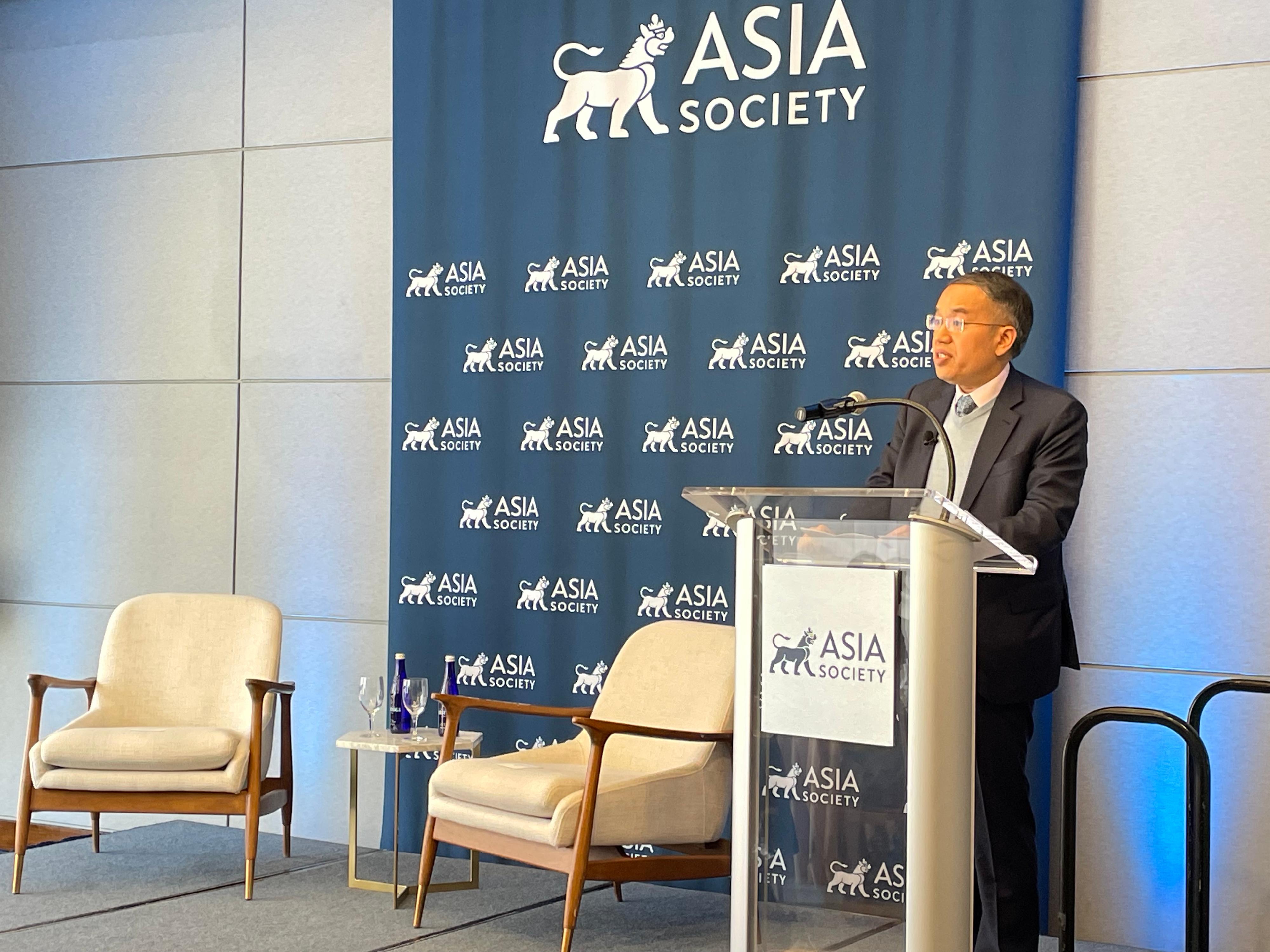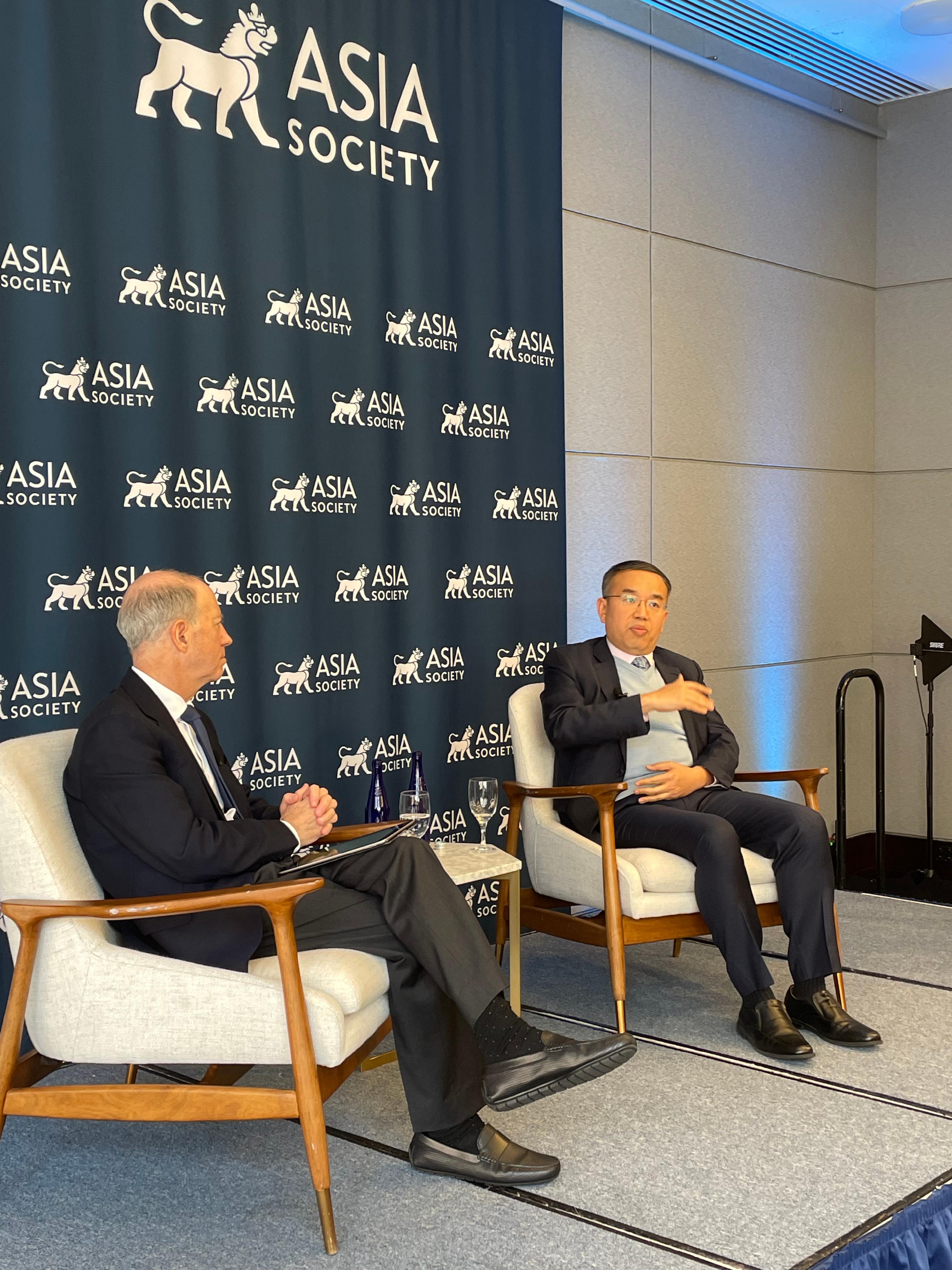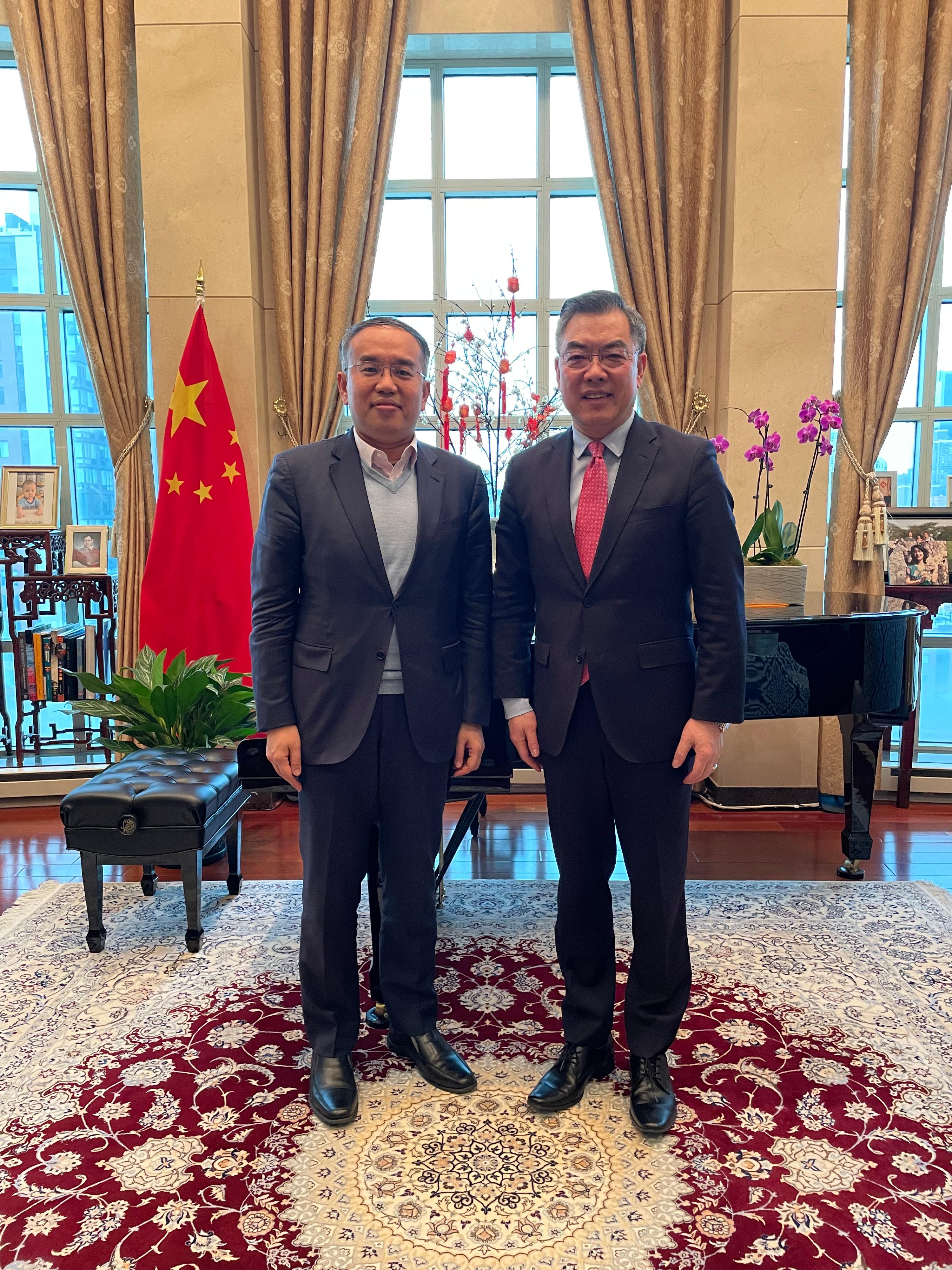SFST continues visit to New York (with photos)
The Secretary for Financial Services and the Treasury, Mr Christopher Hui, yesterday (April 9, New York time) continued his visit to New York, the United States.
In the morning, Mr Hui met with the Founder of Bloomberg L.P. and Bloomberg Philanthropies, Mr Michael Bloomberg. Hong Kong is making tremendous efforts in developing into an international hub of green and sustainable finance as well as family office business. Mr Hui discussed with Mr Bloomberg Hong Kong's policy initiatives to turn the city into a global centre for philanthropy, and the financial means to resolve the challenges brought about by climate change.
Speaking at a luncheon co-organised by the Hong Kong Economic and Trade Office, New York and the Asia Society, Mr Hui shared with the participants Hong Kong's vision and strategies on strengthening the positions as a global financial hub and a gateway to Asia in three simple letters – A, B and C.
"A" stands for anchor. "Hong Kong is like an anchor, being stable and resilient during uncertain times.
"Our stability is backed by the 'one country, two systems' principle. High degree of autonomy, courts' independent exercise of judicial power and the rule of law are all upheld in Hong Kong," Mr Hui noted.
Despite the hit by COVID-19 on the economy, Hong Kong remains Asia's largest hub for hedge funds and the second largest for private equity, behind only Mainland China. Hong Kong currently oversees nearly US$4 trillion in assets. There are over 2 700 single family offices in Hong Kong, demonstrating the city's status as a premier hub for global family offices and wealth owners. The Linked Exchange Rate System is supported by robust foreign currency reserve assets of over US$420 billion, 1.7 times the size of Hong Kong's monetary base.
Mr Hui continued, "'B' stands for buffer. Hong Kong has long positioned itself as an international risk management centre, providing a diverse range of risk management channels including professional insurance services. We strive to diversify our financial services offerings, for example developing RMB (Renminbi) businesses, as we seek to provide a buffer against external economic challenges and uncertainties."
He was referring to Hong Kong's active promotion of the development of insurance-linked securities, on-going efforts to deepen the various mutual-market access schemes that facilitate RMB cross-boundary investment and two-way fund flows, and encouragement of provision of more offshore RMB products and risk management tools by financial institutions.
Regarding "C", Mr Hui said it is capstan, meaning that Hong Kong's strategic location as a gateway to Asia and beyond makes it an ideal place for global businesses and investors. He added that Hong Kong is not only a gateway to the fast-growing markets of the Association of Southeast Asian Nations, but also to the broader Belt and Road Initiative regions.
"We will host the Conference of Belt and Road Initiative Tax Administration Cooperation Forum in September, providing a platform for representatives from governments, international organisations, academic institutions, and strategic enterprises to establish connections and exchange ideas on tax administration co-operation and capacity building," Mr Hui noted.
Mr Hui yesterday also joined a roundtable discussion on Hong Kong's fintech development, which was joined by leaders of companies engaging in fintech business. Apart from Hong Kong's vibrant fintech scene, Mr Hui introduced to the roundtable the government efforts to build a holistic Web3 ecosystem, including provision of an enabling environment and support measures to help the sector flourish.
Moreover, yesterday afternoon, Mr Hui met with the Founder and Managing Partner of family office Accathon Capital, Mr Michael Zhu, and a number of investment fund clients of J.P. Morgan to exchange views on the challenges and opportunities amid the current global financial landscape.
Before concluding his visit yesterday, Mr Hui paid a courtesy call to the Chinese Consul General in New York, Mr Huang Ping.
On April 10 (New York time), Mr Hui will join a breakfast roundtable on the sharing of listing practices hosted by an international, multi-practice law firm, and attend a luncheon with Committee of 100, a membership organisation of prominent Chinese Americans in business, government, academia, science, technology, and the arts. Mr Hui will then depart for Chicago in the evening.




